|
|
 |
|
Maple sugarin’
is a tough job
By Bob Robinson
GREENVILLE – “First year I made tar… the second year I got a small
batch of sugar… the third year I scorched it…” Chris Supinger told a
family making sugar out of maple sap is tough. Tours were held
throughout the day March 1 during the annual Maple Sugarin’ Festival at
Darke County Parks.
“You had to know what you’re doing,” he said. The problem is with the
documentation. “It’s a lost skill. Kind of like tying your shoes.”
Supinger asked one of the visitors if she kept a diary. “Yes.” “Did you
write down how to tie your shoes?” She shook her head. “These mundane
things in life they didn’t replicate.”
Supinger told the group you need 40 gallons of sap to make a gallon of
sugar, adding you get the syrup first; after that comes the sugar.
“It’s difficult.”
The “art” was taught to the white man by the Native Americans. They
would hollow out a large piece of tree trunk, usually by burning out
the hole in the wood. The pioneers came along and asked what they were
doing. Making maple sugar… so they gave them a taste. “This stuff
tastes great! But they knew they could do it better… they could work
metal. The Native Americans couldn’t.”
They started using the open kettle. So what happens if bugs get into
it? “Protein,” Supinger said. “Makes it crunchy.” Why maple? “They
couldn’t make ‘real’ sugar because molasses was not available. They had
their priorities… rum! I didn’t say they were stupid.”
He told the group making sugar was a community effort. All residents
participated in boiling it down. When it was finished, each resident
asked for the amount they felt they needed. What was left over was
traded for other items the community needed. Other parts of the tour
included advancements in the equipment available to the pioneers over
time, culminating in the use of an evaporator similar to the one in the
Sugar Shack.
Karen Burkett, a volunteer at Shawnee Prairie’s Log House talked about
the living accommodations of the early pioneers, noting the cabin’s two
floors made it something in which ‘someone of substance’ would live.
“The typical cabin is only one floor – maybe with a loft – and a room
about half this size.”
Heating in the winter was a huge issue on the frontier. The fireplace
was the sole source of heat, so the upstairs was often closed off in
cold weather. Burkett did note, however, the beams in the ceiling
usually had some space between them so a minimal amount of heat could
filter up to the next floor.
The day started with a waffle and sausage breakfast from 8 a.m. until
noon. The tours continued until 4 p.m. According to Park District
volunteers well over 400 people attended. Most were there for breakfast
and a tour but others continued to trickle in throughout the day.
Published courtesy
of The Early Bird
|
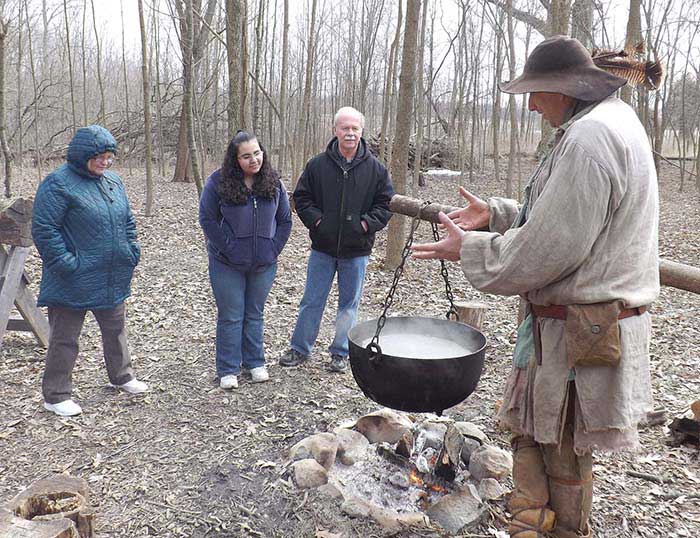
|
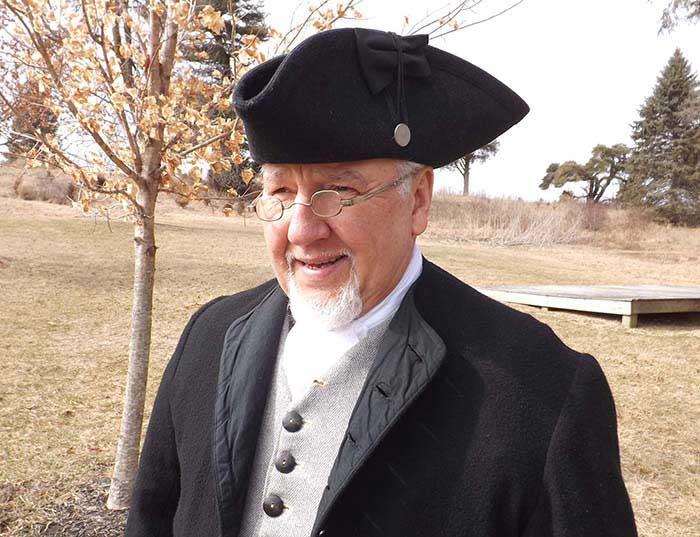
|
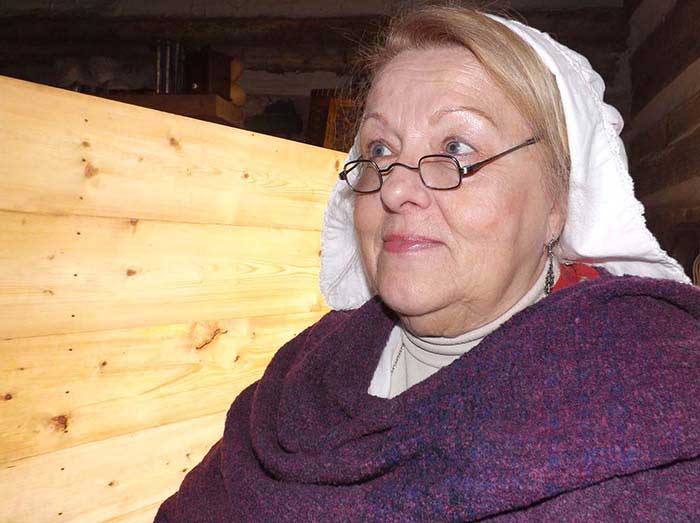
|
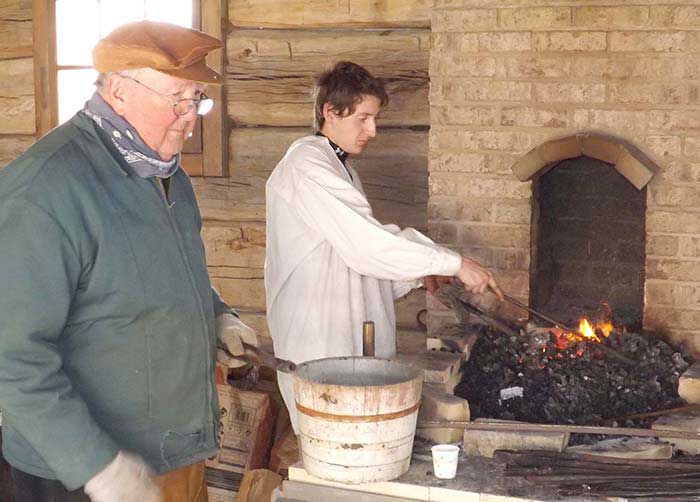
|
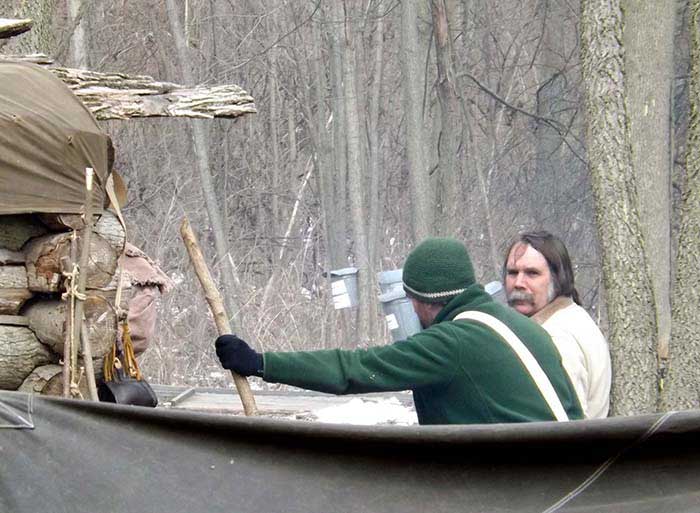
|
|
|
|

